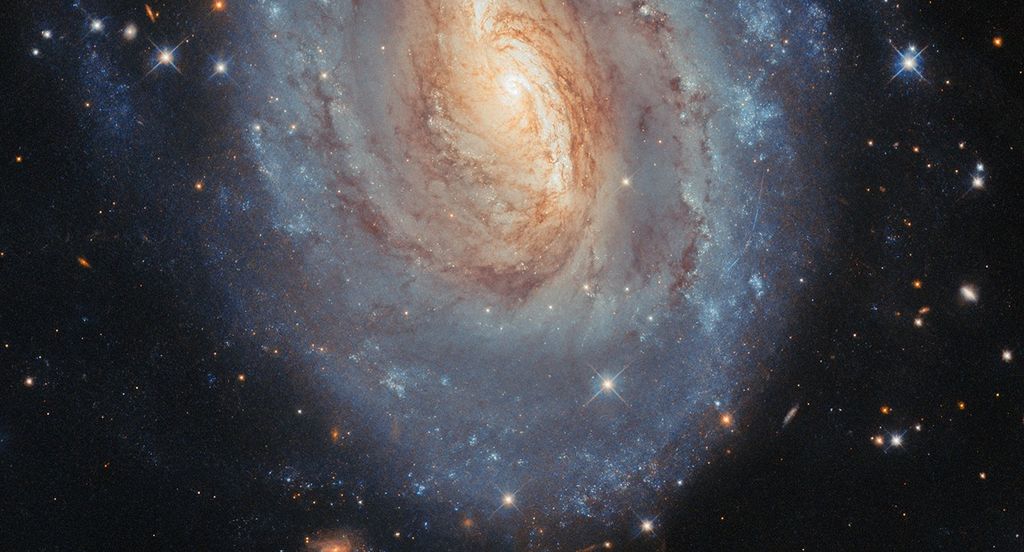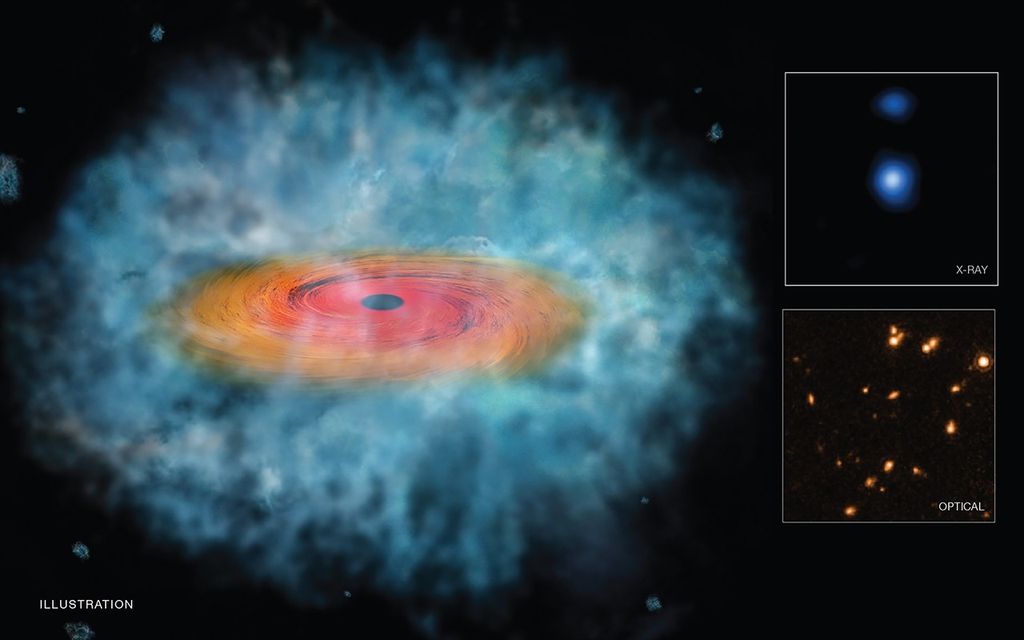1 min read
P/2013 P5 on September 10, 2013

About the Object
- DistanceDistanceThe physical distance from Earth to the astronomical object. Distances within our solar system are usually measured in Astronomical Units (AU). Distances between stars are usually measured in light-years. Interstellar distances can also be measured in parsecs.At the time of the Hubble observations in September 2013, P/2013 P5 was 1.1 astronomical units (112 million miles) from Earth and 2.1 astronomical units (195 million miles) from the Sun.
About the Data
- Data DescriptionData DescriptionProposal: A description of the observations, their scientific justification, and the links to the data available in the science archive.
Science Team: The astronomers who planned the observations and analyzed the data. "PI" refers to the Principal Investigator.The image was created from Hubble data from proposal 13475: D. Jewitt (University of California, Los Angeles), J. Agarwal (Max Planck Institute for Solar System Research), H. Weaver (JHU/APL), M. Mutchler (STScI), and S. Larson (University of Arizona). - InstrumentInstrumentThe science instrument used to produce the data.HST>WFC3/UVIS
- Exposure DatesExposure DatesThe date(s) that the telescope made its observations and the total exposure time.September 10, 2013
- FiltersFiltersThe camera filters that were used in the science observations.F350LP (long pass)
- Object NameObject NameA name or catalog number that astronomers use to identify an astronomical object.P/2013 P5
- Object DescriptionObject DescriptionThe type of astronomical object.Active Asteroid
- Release DateNovember 7, 2013
- Science ReleaseNASA’s Hubble Sees Asteroid Spout Six Comet-like Tails
- Credit

This image was originally black and white and recorded only overall brightness. These brightness values were translated into a range of bluish hues. Such color "maps" can be useful in helping to distinguish subtly varying brightness in an image.

Related Images & Videos
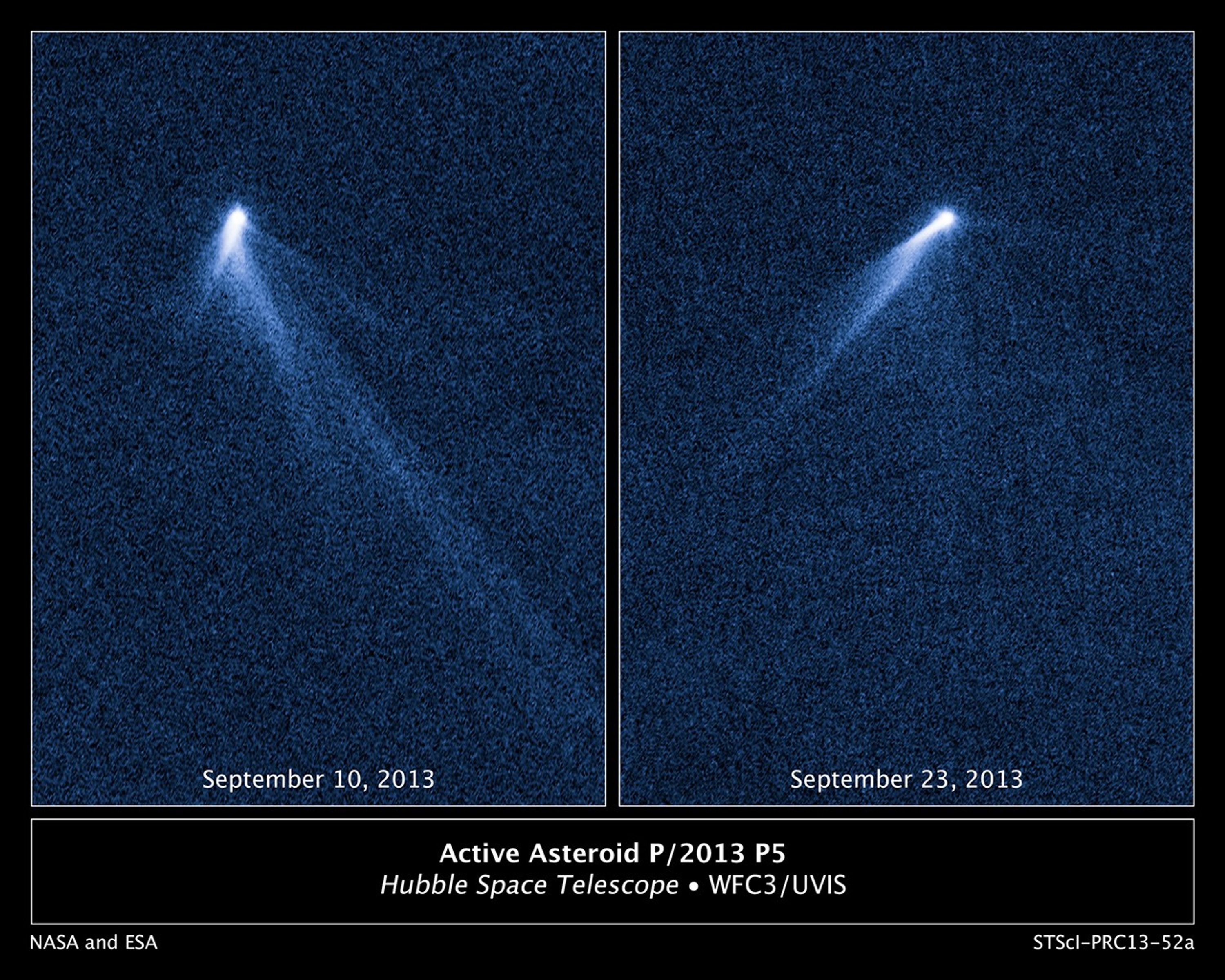
Active Asteroid P/2013 P5
This NASA Hubble Space Telescope set of images reveals a never-before-seen set of six comet-like tails radiating from a body in the asteroid belt, designated P/2013 P5. The asteroid was discovered as an unusually fuzzy-looking object with the Panoramic Survey Telescope and Rapid...
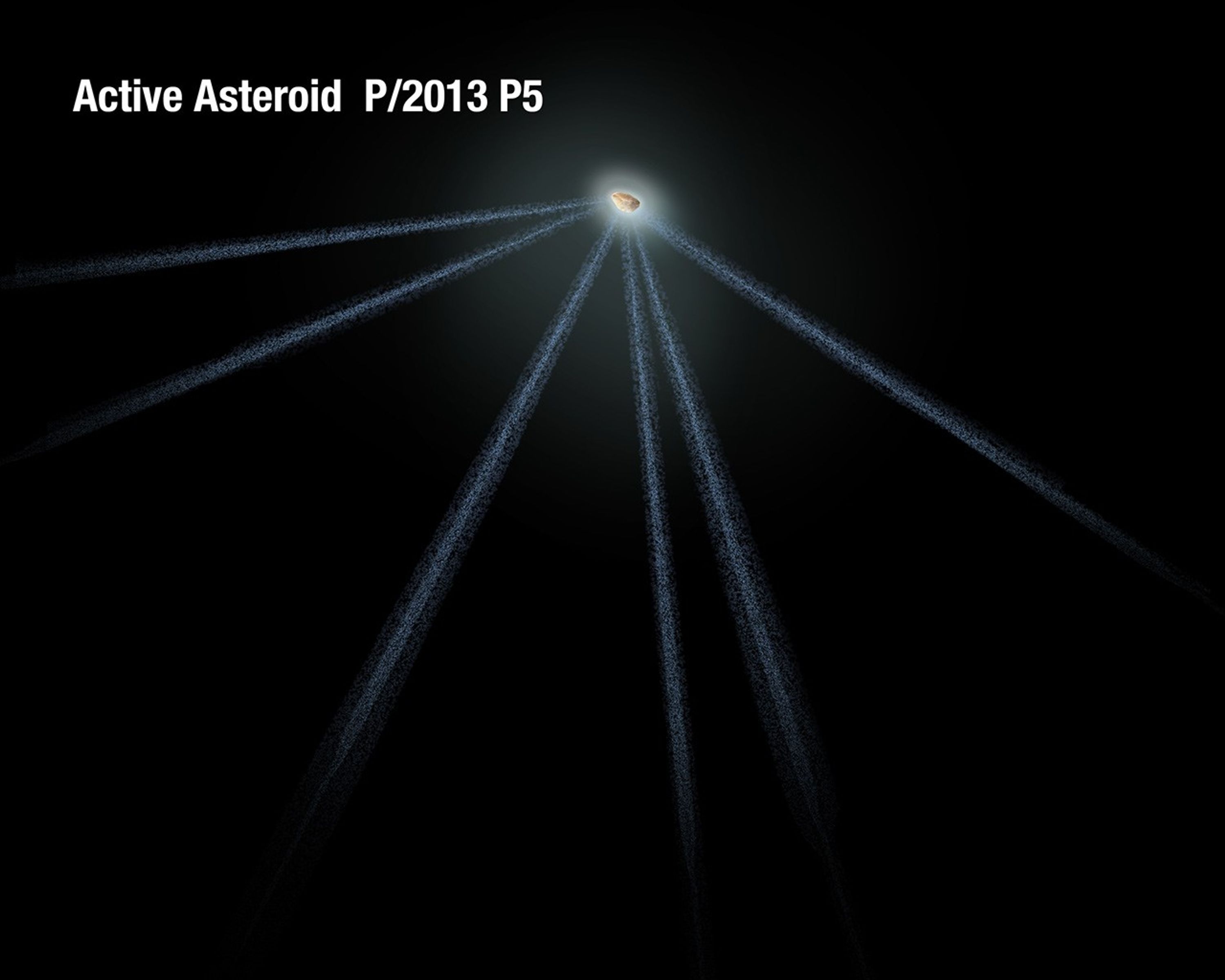
Active Asteroid P/2013 P5 (Artist's Schematic)
This is a diagram of the structure seen around an active asteroid designated P/2013 P5. The Hubble Space Telescope photographed six finger-like dust tails in September 2013. One interpretation is that the asteroid's rotation rate has been increased to the point where dust is...
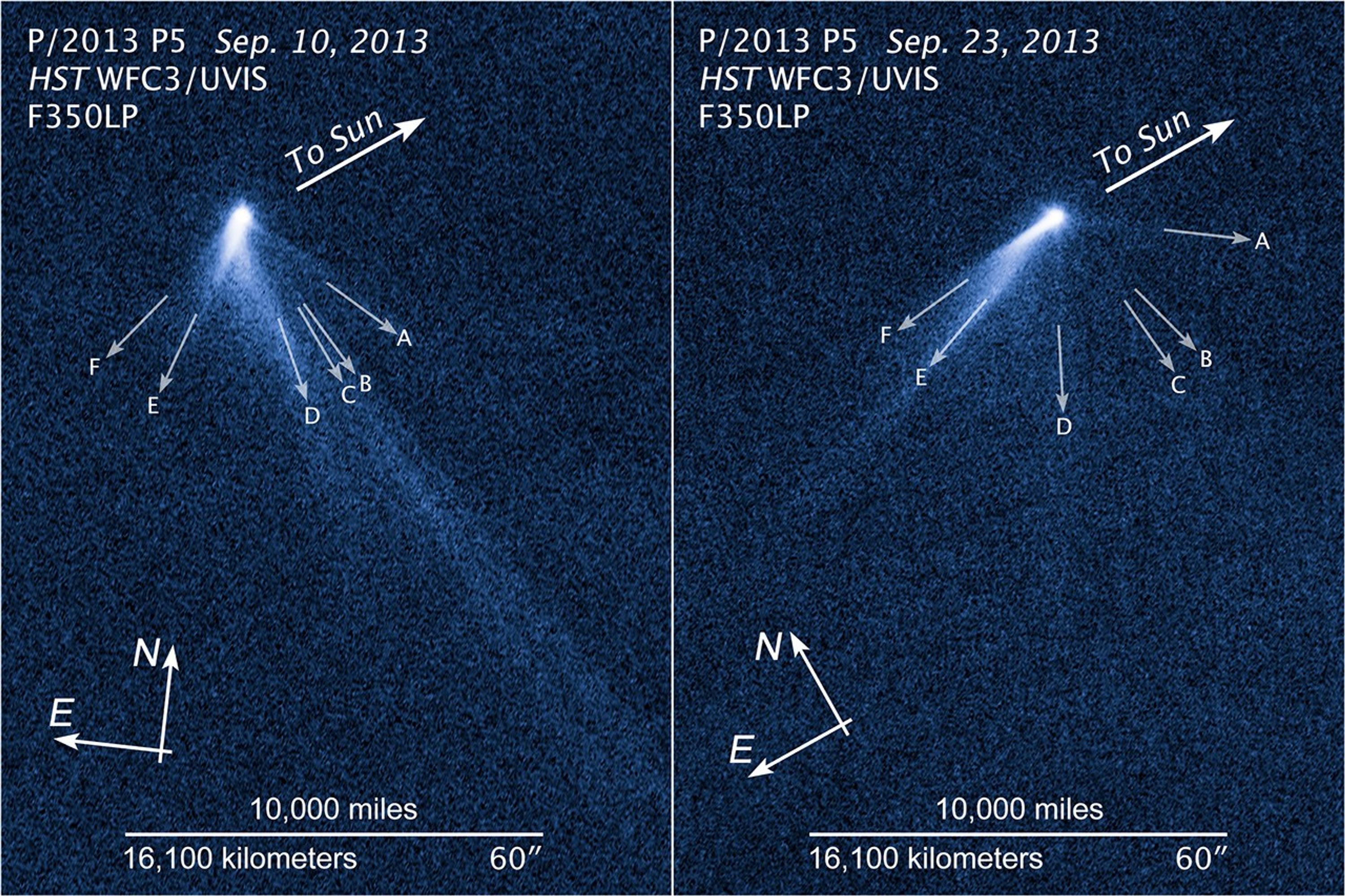
Compass and Scale Images for P/2013 P5
The Hubble Space Telescope photographed six finger-like dust tails in September 2013 of active asteroid P/2013 P5. One interpretation for the structure is that the asteroid's rotation rate has been increased to the point where dust is falling off the surface along the equator...
Share
Details
Claire Andreoli
NASA’s Goddard Space Flight Center
Greenbelt, Maryland
claire.andreoli@nasa.gov













